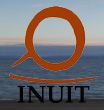Hosted by the Inuit Circumpolar Council
The Summit takes place in Anchorage, about 800 km east of the Alaskan village of Newtok, where intensifying river flow and melting permafrost are destroying homes and infrastructure, forcing 320 residents to relocate to a higher site 15 km west, at an expected financial cost in the tens of millions of dollars.
At the Summit, Indigenous Peoples from every world region will share observations and experiences of early impacts in their part of the planet, as well as traditional practices that could both ease climate change and help all humanity adapt to its anticipated consequences.
With scientific experts now predicting that the effects of climate change will be more severe and appear even faster than previously believed, Indigenous Peoples will present the Summit with new observations of changes.
"Indigenous Peoples have contributed the least to the global problem of climate change but will almost certainly bear the greatest brunt of its impact," says Patricia Cochran, Chair of both the Inuit Circumpolar Council and the April Summit.
"Indigenous Peoples are on the front lines of this global problem at a time when their cultures and livelihoods in traditional lands are already threatened by such trends as accelerating natural resource development stimulated by trade liberalization and globalization."
Says Sam Johnston of Tokyo-headquartered United Nations University
Over millennia, Indigenous Peoples have developed a large arsenal of practices of potential benefit in the climate change context, including:
* Traditional methods of shoreline reinforcement, land stabilization and reclamation;
* Protecting watersheds with Indigenous farming techniques; and
* Fostering biodiversity and the growth of useful species through planting, transplantation, and weeding techniques, the benefits of which have often gone unappreciated outside Indigenous communities until traditional peoples are relocated or their practices restricte

 Hosted by The Inuit Circumpolar Council, April 20-24, 2009 in Anchorage, Alaska.
Hosted by The Inuit Circumpolar Council, April 20-24, 2009 in Anchorage, Alaska.